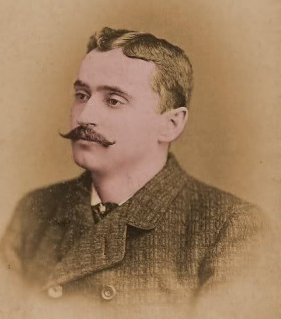 Edward Hugh (Ned) Hanlon | Mount Pleasant ParkGolf CourseMaryland's Tournament CourseEstd. June 30, 1934 | Charles Augustin (Gus) Hook |
 Edward Hugh (Ned) Hanlon | Mount Pleasant ParkGolf CourseMaryland's Tournament CourseEstd. June 30, 1934 | Charles Augustin (Gus) Hook |
At the United States Golf Association meeting on February 1, 1922, President J. F. Byers approved the formation of the Public and Municipal Golf Courses Committee. He appointed James D. Standish, Jr., of Detroit, chairman. Albert D. Locke, Robert McKinley, Grantland Rice, and Malcolm McGregor were appointed members of the committee. Mr. Standish chaired the committee from 1922 to 1927, and again from 1945 to 1947.

One of the first acts of the new committee was the establishment of the Amateur Public Links Championship of the United States. The initial competition was awarded to Ottawa Park Golf Course in Toledo, Ohio, at the request of Sylvanus P. Jermain, president of the Toledo District Golf Association. The event was open to all amateur golfers not members of or enjoying the privileges of a private club maintaining and supporting its own golf course. An entry fee of $5.00 was charged. Each entrant was required to certify on his Entry Blank that he had never (a) carried clubs for hire since attaining the age of 16 years, (b) received any consideration, either directly or indirectly, for playing or teaching the game of golf or for playing in a match or tournament, (c) played for a money prize in any competition. The winner at match play would receive a gold medal, the runner-up a silver medal, and a special prize would be given for the lowest score in the 36-hole qualifying round. The Standish Cup, donated by the committee chairman, would be kept in the city from which the winner had entered, and the winner would be deemed the champion Public Links Golfer for the year.
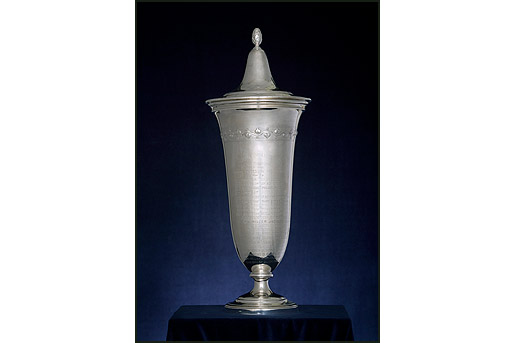 The Standish Cup
The Standish Cup
Mr. Standish, who would come to be known as the “father” of the Amateur Public Links championship, described the first competition:
"The Committee had no way of anticipating how many entrants to expect, or how the entrants would raise their allowance of traveling expenses plus $4 a day. It was a matter of great satisfaction when 140 entries were received.
"Less than half the players wore golf shoes. About one in three started by placing his sand tee on one of the flat metal tee markers then in use. They were, of course, dissuaded.
"The winner was Eddie Held, St. Louis, who defeated Dick Walsh, New York, 6 and 5, in the final. Walsh won the title the following year at Washington, and both of the first finalists developed into excellent competitors and members of private clubs. Held is now a professional.
"Although the Committee had to wink at several inadvertent infractions of rules, the first championship was a great success. So few really knew what the Rules of Golf meant that the foundation given in the rules was considered to be worth the whole undertaking.
"One of the most unusual incidents that ever took place during a golf match occurred during the event. Two players had just made their second shots on a hole near the finish when a pistol shot sounded in the rear rank of the gallery. A thoroughly disinterested spectator had chosen that particular moment to commit suicide. After the excitement quieted down, the match continued."
In 1923, the second year of the championship, team competition was introduced in addition to individual play. Four-man teams competed in total-stroke play over 18 holes. The winning city’s team received a trophy donated by Warren Harding, incumbent President of the United States [and thereby a member of the USGA Executive Committee, ex officio]. The Chicago team won the first competition in this format with a score of 311. In 1924, the format was changed to four-man teams playing 36 holes, and remained so until the championship came to Mount Pleasant Park in 1939.
The number of entrants in the individual competition climbed generally upward from the 140 who participated in the inaugural event in 1922, topping 200 for the first time in 1932, and reaching a then-record 223 when the 15th championship was held at Bethpage State Park in 1936 on the Blue Course. That record was broken in 1938 when there were 248 entries.
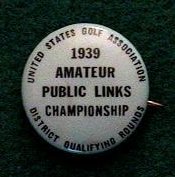
Over the years, the number of U.S. Amateur Championship entries roughly paralleled those of the U.S. Public Links Championship. When Bobby Jones completed the Grand Slam by winning the Amateur in 1930 at Merion Cricket Club, he bested a then-record 174 other entrants. About this victory, O. B. Keeler wrote in The Atlanta Journal:
"This victory, the fourth major title in the same season and in the space of four months, had now and for all time entrenched Bobby Jones safely within the "Impregnable Quadrilateral of Golf," that granite fortress that he alone could take by escalade, (note) and that others may attack in vain, forever."
The next year, that entry record was broken when 583 golfers, obviously inspired by Jones’s feat [and undaunted by Keeler’s words], entered the Amateur. Francis Ouimet [winner of the 1913 U.S. Open Championship] won, capturing the final match by a score of 6-and-5 over Jack Westland.
In 1938, the Public Links Championship was held in Cleveland. Baltimore sent a four-man team and several individual competitors. A group including Frank H. Durkee, president of the Park Board, George Leroy Nichols, superintendent of parks, Preston Pairo, Baltimore’s representative on the USGA’s national committee, and Gus Hook, designer and superintendent of Mount Pleasant, also went to Cleveland with the goal of persuading USGA officials to award the 1939 championship to Baltimore.
The task of the Baltimore emissaries was undoubtedly bolstered by the publicity generated in anticipation of what would be the major sports story of 1938. The long-awaited and several-times-postponed match race between Seabiscuit and War Admiral had finally been arranged by Alfred Gwynne Vanderbilt, and was set to be run in the fall meeting at Pimlico Race Course in Baltimore. [Pimlico is on the same road as the Mount, about five miles away.] Securing the race for the city did much to enhance Baltimore’s reputation as an important sports town.
War Admiral, son of Man o' War, was thoroughbred royalty. He won the Triple Crown in 1937 and was named Horse of the Year. In 1938 he won eight major races, including the Whitney Handicap and the Jockey Club Gold Cup. Seabiscuit was undersized, knobby-kneed, and enjoyed eating too much and sleeping for long periods of time. As a three-year-old, he didn't qualify to run in the Kentucky Derby, Preakness or Belmont. In the Match Race at Pimlico, War Admiral was the one-to four favorite. Get your bet down and enjoy the video!
Mount Pleasant Park Golf Club was selected to host the championship. The dates were set for July 24th through 29th, 1939.
On April 30, 1939, it rained on Mount Pleasant Park, and that would be the last day of rain for many weeks. The sun shone brightly over cloudless skies, day after day, and the fairways at the Mount started to burn. First the surface grass turned brown, and in early June, the grass roots started to shrivel.
The greens were safe, and in excellent condition. Gus Hook had recently journeyed to the Philadelphia Country Club to watch the 1939 U.S. Open, and observed that his greens at the Mount were in as good shape as those on the Open course. Hook had installed a watering system during construction that could keep the greens wet. It was impossible, however, for him to fashion a way to siphon off water from the system to use on the fairways.
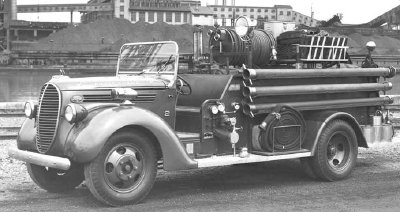 Baltimore City Fire Department fire truck, a 1938 Ford model. The cylindrical chrome device mounted on the truck's left front fender is called a "sireeeen," Hon.
Baltimore City Fire Department fire truck, a 1938 Ford model. The cylindrical chrome device mounted on the truck's left front fender is called a "sireeeen," Hon.
With the tournament in the balance, Hook went to work. He persuaded the Fire Department to give him a half-mile of hose. He talked to [perhaps old friends and co-workers at] the Bureau of Water Supply, which responded by sending out crews to fit hydrants around the course. Hook split his maintenance crew into a day shift and night shift, and each kept water pouring on the fairways around the clock, seven days a week. Several hydrants fitted for use by Hook’s men were located across Hillen Road from the course. Guards were posted to warn drivers to slow down as they ran over the hoses, but some motorists ignored them. Hook asked a city newspaper to print his request to respect the hoses, and the paper obliged.
The massive effort to counteract the effects of the drought were successful, and at the time of the championship, officials and competitors praised the course for its beautiful condition.
When the Amateur Public Links Championship was held at Mount Pleasant Park Golf Club in 1939, the entry record for any USGA national championship was shattered. A total of 2,401 golfers entered, ten times more than had signed up the previous year, and more than three times the number who had entered the U.S. Amateur Championship in any year to that point. Due to the extraordinary number of entries, sectional qualifying was held for the first time. Qualifiers were held at 33 courses around the country. One hundred and ninety golfers made it through, and of those, 178 made the trip to Baltimore to compete.
The championship was won by Andrew Szwedko, a 32-year-old Pittsburgh steelworker, who defeated Phillip Gordon, a 22-year-old Oakland insurance man, by a score of 1-up. There were two other Szwedkos from Pittsburgh in the medal round, perhaps Andrew's brothers or cousins. Only Andrew qualified for match play. It was Mr. Szwedko’s fifth attempt to win the tournament. His previous best finish was a loss in the semi-finals in 1937. Szwedko would go on to win another important amateur title, the 1961 Pennsylvania Public Links Championship, and would finish as second-low amateur and T29th overall in the 1940 U. S. Open.
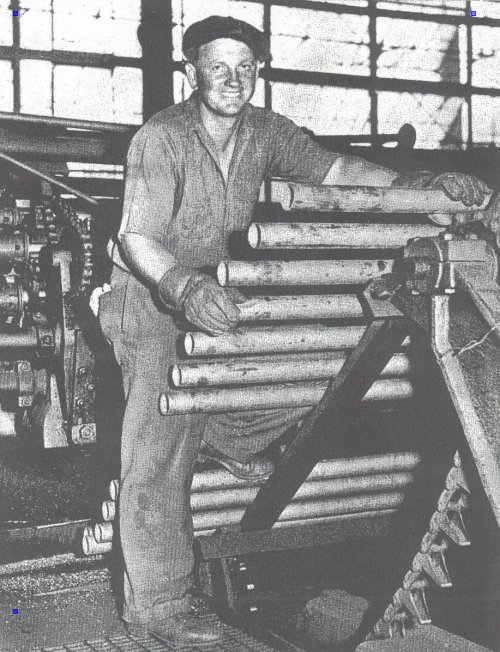 1939 U.S. Public Links Champion Andy Szwedko
1939 U.S. Public Links Champion Andy Szwedko
In the two seeding rounds at Mount Pleasant Park, there was a tie for the first-place medal. Four golfers managed to shoot even par: Arthur Armstrong, Honolulu, 72-72; Luke Barnes, Atlanta, 71-73; Gerry Bert, Jr., Seattle, 70-74, and Jack Taulman, Columbus, Ind., 74-70. This was the first four-way tie in a USGA championship. Tournament officials decided there was insufficient time for a playoff, and the four were each awarded low-qualifier medals.
The top 64 golfers and ties after the first medal round scored 78 or lower. The two-round cut came at 156, twelve over par. Seven golfers on the number played off for the final six match-play spots. Dick Crosby, of Portland, Oregon, lost the playoff. Al Leach, the defending champion, shot 160 and missed the cut by four. Bob Wingate, the 1930 champion, shot 86-87, and missed the cut by 17 strokes. The 1931 and 1933 champion, Charles Ferrera, was eliminated with scores of 79 and 84. The lowest single-round score was 70, achieved by three golfers. Three other golfers shot rounds of 71.
Baltimore area golfers Al Huegelmeyer [who would win the 1942 Mount Pleasant Park club championship], John A. Armacost, Cliff Richardson, Eddie Johnston, and James Rafferty won qualifying berths in the medal round. Only Eddie Johnston made it through to match play. He defeated Olin Cerrocki, of New York, 4 and 3 in his first match, then lost the next to Louis Cyr, of Vancouver, Washington, 2 and 1. Andrew Olivieri, from Washington, D.C., qualified for match play, but lost in the opening round.
In the team competition, team size was reduced from four golfers to three. Twenty-seven cities sent teams. Los Angeles repeated as champions, with a three-man, 36-hole score of 442, ten over par. The previous year, the four-man Los Angeles team won with a 36-hole score of 584, eight over par. The Baltimore team, tied with Spokane and San Francisco for ninth place after the first day with a score of 233 [12 strokes back], finished somewhere lower than fifteenth place. The last team listed in the New York Times account, the fifteenth-place Spokane team, had a score of 477.
Perhaps the golfer in the field who went on to the greatest glory was the 22-year-old unemployed metal polisher from Utica, New York. Ed Furgol qualified easily for match play at Mt. Pleasant Park, shooting 75 72 - 147. He won three matches, then lost 2-and-1 to 34-year-old San Francisco radio-car patrolman Jim Molinari in the quarter-final round. Fifteen years later (in 1954) he won the United States Open at Baltusrol, beating Gene Littler by one stroke and Lloyd Mangrum and Dick Mayer by two.
Big crowds attended the championship. Five thousand fans watched the semi-final matches, and the next day an equal number followed as Mr. Szwedko defeated Mr. Gordon in the 36-hole final.
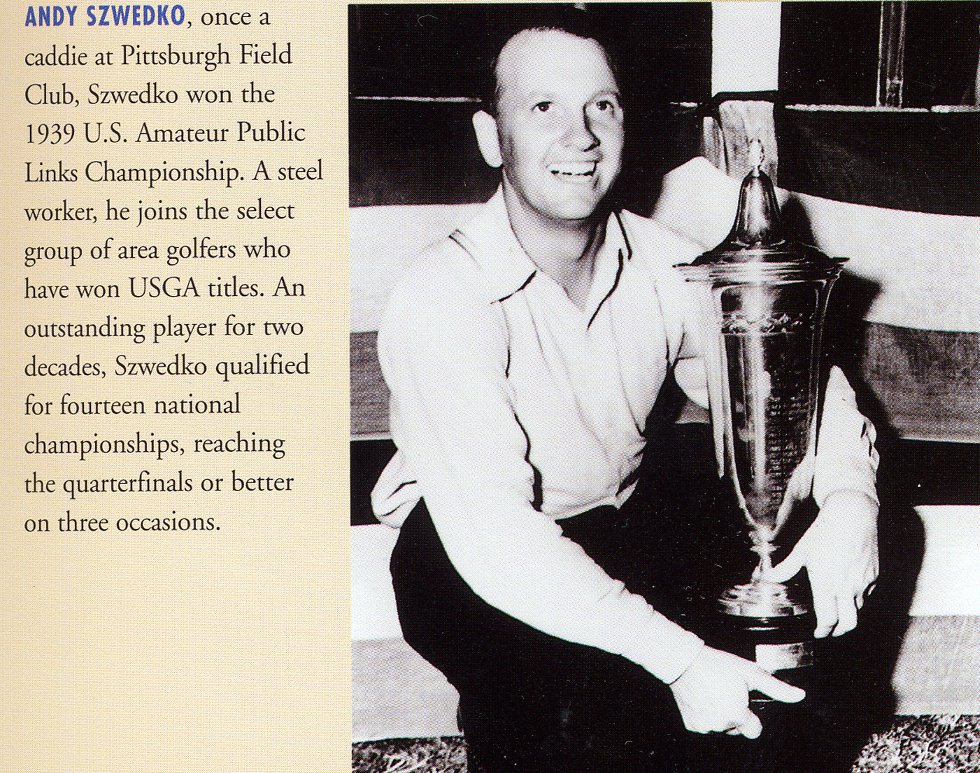 1939 U.S. Public Links Champion Andy Szwedko. (Photo courtesy Western Pennsylvania Golf Association.)
1939 U.S. Public Links Champion Andy Szwedko. (Photo courtesy Western Pennsylvania Golf Association.)
In its fiscal accounting, the USGA announced that it lost $272.55 in staging what was, at the time, the world’s largest major golf competition.
(Click on article to enlarge it.)